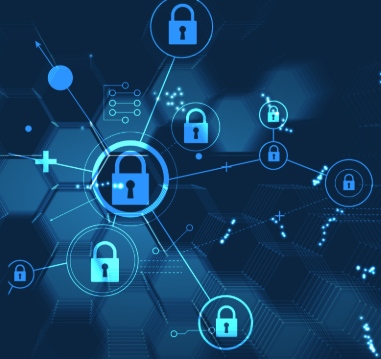A Beginner’s Guide to Understanding Cyber Risk Quantification Frameworks
- 109 Views
- admin
- 12/19/2024
- Cybersecurity
In a world where digital interconnectivity is the norm, the concept of cyber risk has evolved into a critical issue for businesses, governments, and individuals. The surge in cyber threats over the past decade has pushed organizations to rethink traditional security strategies. In response, major regulatory bodies have introduced updated rules, such as the SEC Cybersecurity Rule and NIST CSF 2.0, to help guide businesses in strengthening their cyber resilience.
One of the most impactful developments in this area has been the rise of cyber risk quantification—an approach that assigns measurable values to cybersecurity threats, enabling clearer communication and better-informed decision-making across organizations.
The Importance of Measuring Cyber Risk
While recognizing potential threats is essential, quantifying those risks transforms abstract concerns into actionable insights. Cyber risk quantification assigns numerical values to possible threats, allowing decision-makers to prioritize and allocate resources based on potential financial impact. This approach is especially useful for leaders outside of IT, as it translates technical vulnerabilities into business-oriented language.
Take the example of regulatory requirements like the SEC’s updated rules. These place a greater emphasis on risk reporting to boards and executive teams. Quantifying cyber risks in financial terms allows executives to weigh security concerns alongside other business risks, supporting smarter investments and more transparent oversight.
Getting Started with Quantitative Risk Assessments
Before diving into detailed analysis, it’s important to understand what cyber risk actually means in this context. At its core, it’s the likelihood of a cyber incident occurring, coupled with the potential damage it could cause. This includes a wide range of threats—ransomware attacks, phishing scams, DDoS disruptions, insider breaches, and more.
Security professionals also need to monitor technical weaknesses, like outdated software or unsecured networks, which could be exploited by attackers. Protecting against these risks requires more than just software solutions; it demands a structured approach that includes training, monitoring, and a culture of vigilance.
Metrics That Drive Clarity
Once risks are identified, the next step is to measure them using standardized metrics. This helps turn complex assessments into understandable figures. Common metrics include the annualized loss expectancy (ALE), which estimates the yearly financial impact of a specific risk, and the risk exposure ratio (RER), which compares potential losses to current safeguards.
These metrics enable security teams and business leaders to evaluate their organization’s exposure in concrete terms and make informed decisions about where to invest in defense.
Exploring Analytical Tools and Techniques
Several methods exist for analyzing cyber risks. Risk matrices, for example, are simple tools that plot likelihood against impact, offering a quick snapshot of threat levels. For deeper analysis, scenario planning and simulations—such as Monte Carlo models—introduce probability and variability into the equation, delivering a more nuanced understanding of risk exposure.
These techniques vary in complexity, but they all aim to help organizations predict and prepare for potential threats more effectively.
Barriers to Accurate Risk Quantification
Despite its value, quantifying cyber risk comes with challenges. Reliable data can be difficult to gather, especially in fast-changing environments. Technology evolves rapidly, and new threats can emerge unexpectedly. Organizations must be prepared to continuously refine their models, ensuring that assessments remain relevant and accurate over time.
Looking Ahead: Emerging Technologies and Trends
The future of cyber risk quantification lies in intelligent automation. As artificial intelligence and machine learning become more integrated into cybersecurity, risk models will become more dynamic and predictive. These technologies can identify patterns in threat behavior, assess new vulnerabilities, and adapt faster than traditional methods.
Organizations that embrace these tools will be better equipped to navigate the shifting landscape of digital threats.
Frameworks That Offer Structure and Transparency
Not all risk scoring tools offer the same level of clarity. Many services generate risk scores without explaining how they’re calculated, leaving users uncertain about their meaning or value. To avoid this issue, it’s best to adopt established models like FAIR (Factor Analysis of Information Risk).
FAIR is a widely respected framework that breaks down risk assessment into structured, measurable components. It emphasizes probabilistic thinking, allowing users to express uncertainty with ranges rather than fixed figures. One of its greatest strengths is its use of financial language, which makes risk communication easier for business leaders and stakeholders.
By using FAIR, organizations gain a consistent and scalable method for evaluating cyber threats, making it easier to prioritize actions and allocate resources effectively.
Turning Insight Into Action
Cyber risk quantification is not just about generating numbers—it’s about using those numbers to drive smarter, more strategic decisions. By employing frameworks like FAIR and leveraging clear, measurable metrics, organizations can build a common understanding of cyber risk across departments and leadership levels.
Looking forward, the role of risk quantification will only grow. As cyber threats continue to evolve, businesses must remain agile, adopting advanced tools and refining their approach to stay protected. The organizations that succeed will be those that treat cyber risk as a measurable business issue—not just a technical one.
Recent Posts
- How AI is Revolutionizing Architectural Design: A Look at Tools, Trends, and the Future
- Streamlining Cyber Risk Assessments Through Automation
- Understanding the Difference Between Blockchain and Distributed Ledger Technology
- Is Bitcoin Mining Still a Viable Venture in 2025?
- Exploring AI: Unveiling Possibilities, Challenges, and Future Implications

